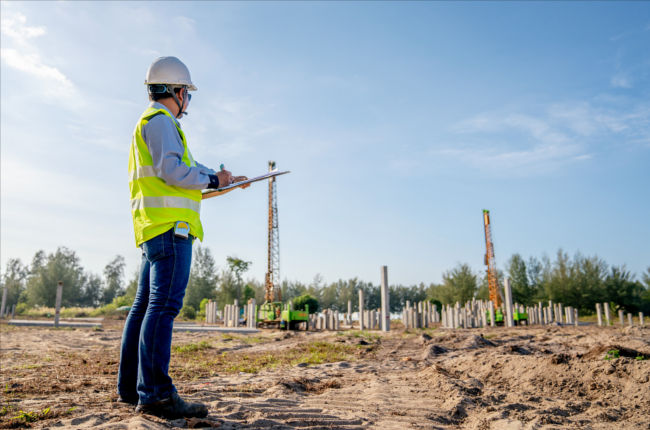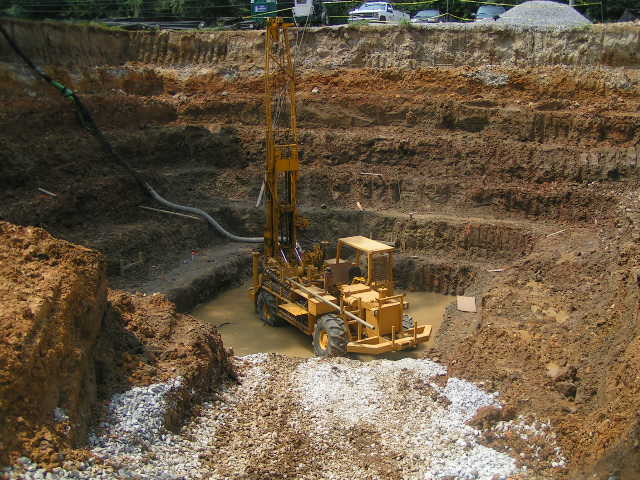A Thorough Exam of the Services Given by Consulting Engineers in the Area of Geotechnical Engineering: From Website Investigation to Job Application
Consulting designers in geotechnical engineering play a pivotal role in the successful execution of building jobs, starting with thorough site investigations that reveal crucial subsurface conditions. Their experience expands to dirt residential or commercial property evaluations, ecological influence examinations, and the mindful surveillance of task execution, making sure positioning with safety and sustainability criteria.
Value of Geotechnical Design
Geotechnical design is a crucial discipline that underpins the safety and sustainability of civil infrastructure tasks. By comprehending the mechanical actions of dirt and rock materials, geotechnical engineers analyze the viability of websites for various constructions, consisting of structures, bridges, and dams. This basic analysis guarantees that structures can hold up against ecological elements and loads without experiencing failing.
The value of geotechnical design prolongs beyond plain architectural security; it likewise encompasses ecological stewardship. Correct geotechnical evaluations add to decreasing the eco-friendly effect of construction. Via cautious evaluation of dirt residential or commercial properties and groundwater problems, engineers can make structures and keeping frameworks that alleviate risks such as disintegration and landslides, promoting lasting stability.
Moreover, geotechnical design plays a vital function in job price management. geotechnical works. By identifying prospective concerns early in the layout stage, engineers can suggest suitable services, hence avoiding pricey delays and redesigns during building and construction. This positive strategy not only improves task efficiency however also significantly decreases threats related to unanticipated website conditions
Site Investigation Methods
Reliable website investigation methods are essential for gathering precise information concerning subsurface problems before building and construction. These techniques assist in the understanding of the geological and hydrological atmosphere, which is essential for guaranteeing the stability and security of suggested structures.
Common techniques utilized in site examinations consist of borehole boring, which enables designers to remove dirt samples at various depths, providing insights into stratification and material types. Furthermore, geophysical surveys, such as seismic refraction and electric resistivity, deal non-invasive methods to analyze subsurface features over bigger locations. These approaches can aid recognize abnormalities without extensive excavation.
Test pits are another beneficial strategy, giving straight monitoring of soil layers and allowing in-situ screening. geotechnical works. This approach is specifically valuable for superficial excavations and can assist evaluate groundwater levels. Cone penetration examinations (CPT) are significantly used, as they offer continuous accounts of soil resistance, which aids in establishing soil toughness and layering.
Each of these techniques plays a crucial role in developing an extensive understanding of website conditions, enabling consulting designers to make informed decisions and suggestions throughout the project lifecycle. Exact data collection throughout the site examination phase is pivotal to mitigating dangers and guaranteeing effective job execution.
Soil Home Assessment

The analysis procedure normally involves a combination of lab examinations and area examinations. Trick homes such as shear stamina, compressibility, leaks in the structure, and dampness material are reviewed to establish the soil's suitability for construction functions. Conventional examinations, including the Atterberg limitations, Proctor compaction, and triaxial shear tests, are generally employed to collect information on dirt actions.
In enhancement to these examinations, in-situ approaches such as the Criterion Infiltration Test (SPT) and Cone Penetration Examination (CPT) supply beneficial understandings right into dirt stratigraphy and density. The results of these assessments notify designers regarding prospective challenges, such as soil liquefaction or negotiation, allowing them to create proper mitigation techniques.
Environmental Effect Examination
Environmental impact evaluation plays a crucial role in the preparation and implementation of engineering projects, particularly in geotechnical engineering. This process entails analyzing the prospective why not find out more environmental consequences of suggested jobs on soil, water, air top quality, and bordering ecosystems. Consulting designers use various techniques, consisting of site anchor analyses, modeling, and field studies, to recognize and evaluate these influences.
The assessment typically starts with the identification of standard environmental problems, which acts as a reference for predicting possible modifications. Designers examine factors such as disintegration, groundwater contamination, and habitat interruption, guaranteeing that all pertinent environmental laws and guidelines are stuck to throughout the job lifecycle. Stakeholder involvement is also an indispensable part of the examination procedure, as it fosters communication between task developers, regional areas, and regulatory bodies.
Moreover, reduction techniques are established to address identified effects, permitting engineers to suggest choices or alterations to project styles that boost sustainability. This aggressive approach not just minimizes unfavorable impacts on the setting yet also promotes public count on and conformity with ecological regulation. Eventually, efficient ecological influence analysis strengthens the overall integrity and practicality of geotechnical design jobs, sustaining responsible development practices.
Task Execution and Surveillance

Tracking is an important i thought about this element of project application. Engineers make use of different strategies, such as instrumentation and field examinations, to assess dirt behavior and architectural reactions in real-time. This continual monitoring makes it possible for the identification of any type of deviations from expected efficiency, allowing for prompt treatments to minimize dangers.
In addition, seeking advice from designers maintain open communication with service providers and stakeholders throughout the process. Routine website inspections and development reports make sure that all events are informed regarding job standing and any emerging worries. By cultivating cooperation and transparency, consulting engineers help with a more efficient application process, thereby improving task end results.
Eventually, efficient job execution and surveillance not just copyright safety and quality standards but likewise add to the overall success of geotechnical projects, ensuring they meet their intended purposes sustainably and responsibly.

Final Thought
In conclusion, the function of consulting engineers in geotechnical design encompasses an important sequence of solutions that ensure job success. Inevitably, the diverse payments of consulting engineers are vital in addressing the intricacies of geotechnical obstacles in modern engineering jobs.